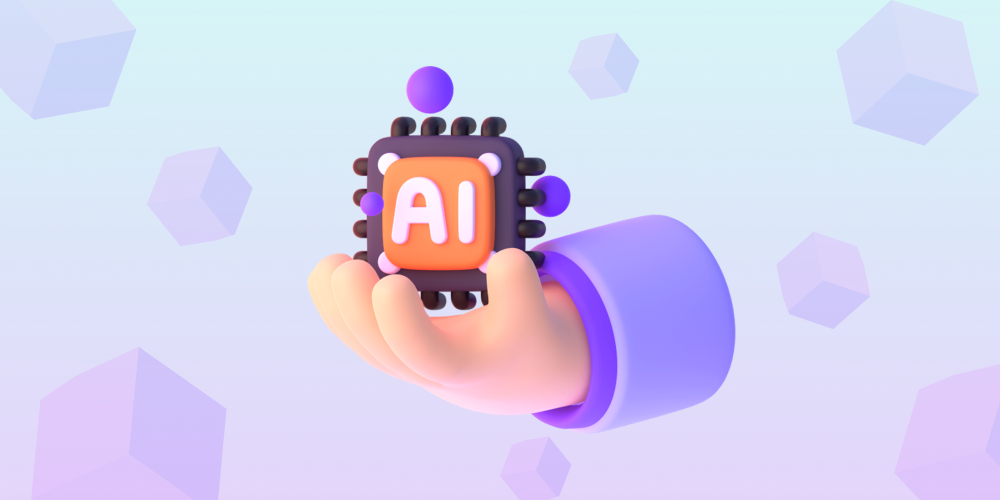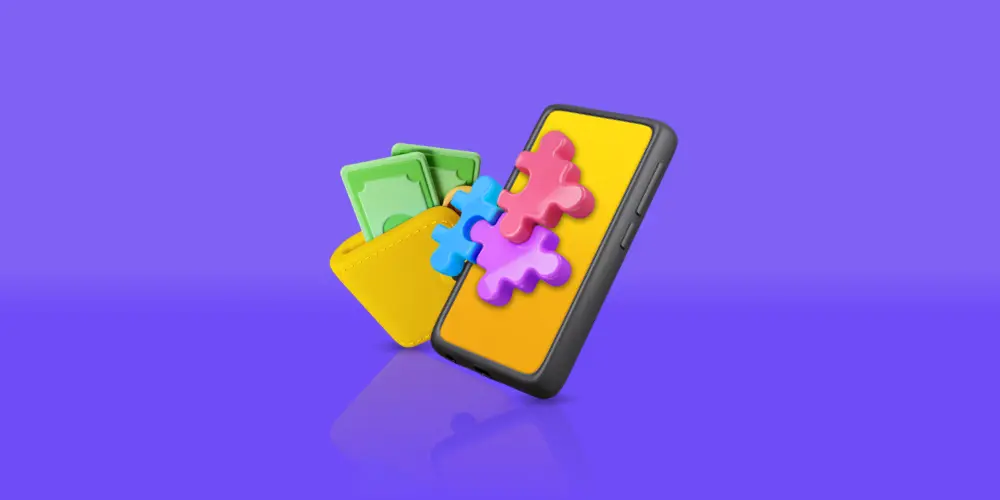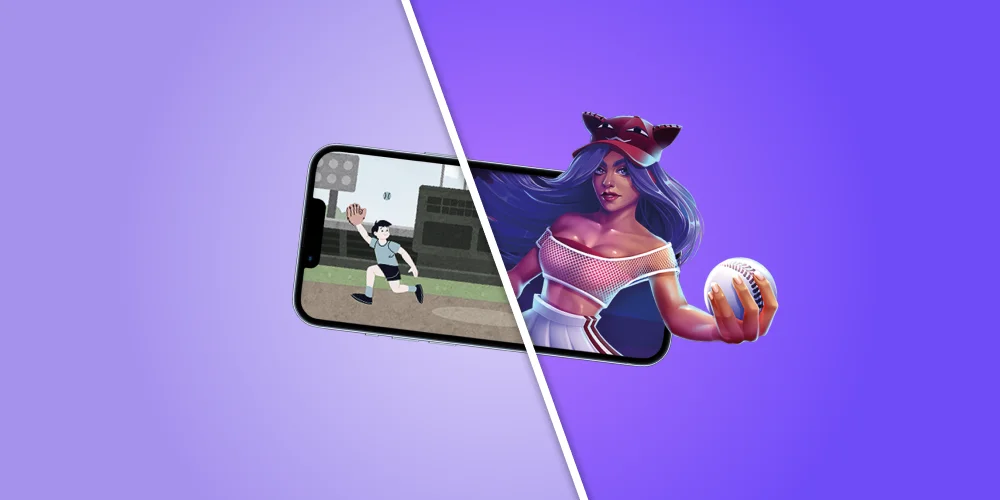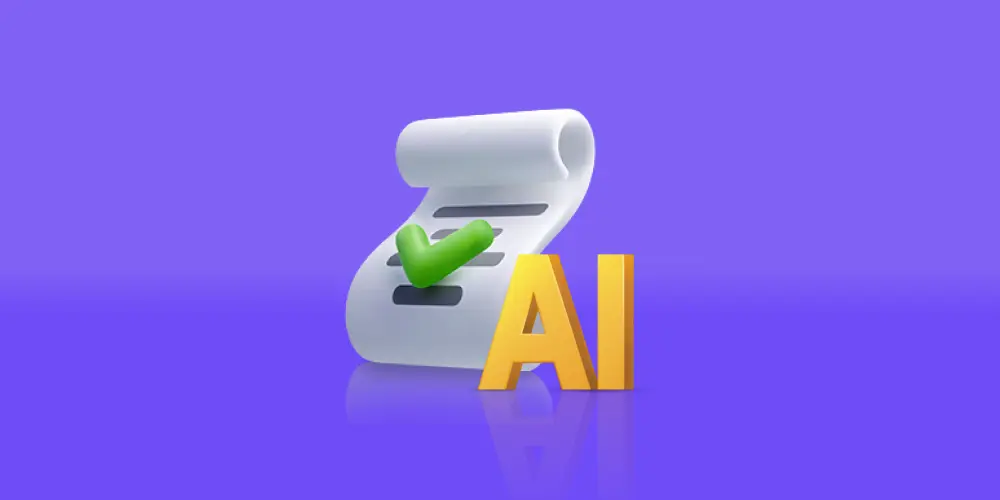
How to Create NFT Game – Everything You Need to Know
KEY POINTS OF THE ARTICLE
- Introduction to the significance of selecting the appropriate game engine for your development project.
- Overview of Unity as a widely-used game engine with a comprehensive asset store and flexible development environment.
- Examination of Godot as an open-source alternative, offering a node-based architecture and user-friendly interface.
- Comparison of scripting languages: Unity’s use of C# versus Godot’s GDScript and their implications for developers.
- Analysis of 2D and 3D capabilities in both engines highlighting strengths and potential limitations.
- Discussion on performance considerations including rendering capabilities and optimization tools.
- Idea of community support and available resources for Unity and Godot users.
- Evaluation of licensing and cost structures, contrasting Unity’s subscription models with Godot’s free, open-source nature.
- Consideration of recent developments such as Unity’s policy changes and their impact on developer choices.
If you have found yourself reading this article, it’s likely you’ve heard some words about NFTs – the brand-new trading activity in the gaming industry. Though the NFT games are still in their early days, the potential of this sphere cannot be overestimated. According to DapRadar, the trading volume of NFT solutions has reached an impressive number of $10.67 billion in the Q3 of 2021, which is a whopping 704% increase from the previous quarter. One of the main factors of such rapid growth is the popularity of NFT games. If you’re looking to capitalize on this boom, you might consider partnering with a studio; you can hire game development studio to bring your NFT game vision to life.
The NFT gaming mainstream has a huge potential to change the entire gaming industry, as according to Gartner, NFTs rank as the leading emerging technology ahead of the digital decade. As of August 2021, there were roughly 280,000 unique buyers or sellers, which were likely caused by the sales in the Axie Infinity game, the world’s largest and most famous NFT collection.

The number of unique wallets involved in trading NFT is consistently increasing since 2017 and has grown to over 250,000 in August 2021. At the same time, the nft marketplace development is growing as well, proving the popularity of selling, creating, and selling non-fungible tokens.
In this article, the NFT gaming developers from Whimsy introduce a comprehensive guide on how to create NFT game that would conquer the gaming industry. As a part of the discussion, you’ll uncover what NFTs are and what their role is in the gaming industry. Also, find out the basic stages for creating an NFT game from scratch.
Ready to learn more? Let’s get it started!
An NFT (a non-fungible token) – is a unique digital certificate stored in the blockchain. It guarantees the originality of the item, and confirms the owner’s exclusive rights.
This concept came from the world of cryptocurrency, and it uses the same blockchain technology. However, it’s not a currency. Unlike other tokens, they cannot be substituted, divided, or replaced imperceptibly. This system works best for securing the rights to a unique object – a work of art, real estate, and, of course, an artifact in a computer game.
By purchasing an NFT token, the user obtains a certificate for a specific item. Still, this item itself does not move anywhere and resides on the eternal storage, also known as InterPlanetary File System (IPFS). Basically, this certificate consists of the lines of code that authenticate the owner of the token as the owner of the original version of the item or object it represents. An NFT token can be also compared to a painting that may belong to a gallery, museum, or private property, but the audience may see it in a catalog or at an exhibition.
NFT Statistics
After you know the definition of NFT technology and what it’s commonly used for, let’s now review the highlights of NFT performance in different industries:
– The first appearance of NFT dates back to 2012/2013, though it wasn’t associated with the blockchain right until 2017.
– One of the earliest signs of NFTs integration was noticed at Christie’s auction house, the place where the original picture in a JPG format of digital artist Beeple, also known as Mike Winkelmann, was sold for $69 million.
– Twitter CEO Jack Dorsey sold an NFT of his first tweet, the estimated value has reached $2.9 million.
– Around $6 million was gained by musician Grimes after selling the NFT collection of digital artwork and videos, with the top piece of “Death of the Old” video sold for $389,000.
Gaming NFT Statistics
However, even more significant changes have been noticed in the gaming industry:
- In Q3 of 2021, 22% of the overall NFT market value was generated by the trading volume of NFT in-game items which has reached an impressive amount of $2.3 billion.
- At the time of writing the top contributors for the NFT market are CryptoPunks (43.4%), Bored Ape Yacht Club (14.5), and NBA Top Shots (6.5%).
- The huge popularity of NFT in the gaming industry has started after launching a 10,000 collection of 24×24 pixel eccentric CryptoPunk characters, including zombies and aliens. The limited edition of 9 NFT portraits of CryptoPunk went close to $17 million on auction. The value of these portraits has resulted from the limited-edition nature of the collection.
- The founder and CEO of Leyline Jeremy Dela Rosa said that the NFT empowered the transition of the gaming industry from the free-to-play to the play-to-earn model. Thus, the market is moving from a competitive approach toward a more collaborative one.
As you can see, the technology of non-fungible tokens is still in its early stages of development. At the same time, it features really strong potential and has the power to enhance the existing standards of different industries, like arts or music, and even fundamentally change the essential models of some, including the gaming industry.
NFTs and its Standards
If you’ve decided to stick to NFT game development create your NFT game, it’s essential to fully understand the particularities of the NFT standards. It will help you understand the characteristics and benefits of each type of NFT and successfully implement the right one into the platform code.
Nowadays, there are several NFT standards that you can choose from: Ethereum, Flow, Tezos and others.
Ethereum Blockchain
Ethereum is the earlise blockchain platform which is used for NFT creation and launching. The Ethereum platform is also the most popular one. And though its potential was firstly underrated, at the time of writing the overall costs for minting an NFT using Ethereum’s ERC721 standard has reached over $80!
In general, there are 3 different token standards on Ethereum:
- ERC 721 Standard – the most popular one, as well as the first NFT standard to be created. It enables the uniqueness of each NFT, so it can be priced independently, for instance, digital art pieces, music, and more.
- ERC 998 & ERC 1155 Standards – both standards allow the registration of fungible (ERC20) as well as non-fungible (ERC721) tokens.
1. With The ERC 998 standard you can organize the assets under this type into complex positions that can be traded within a single transfer of ownership (e.g. portfolios, unique sets of assets, etc).
2. The ERC 1155 standard is mostly used in the gaming industry. Fungible tokens here represent a transactional currency. On the other hand, the non-fungible tokens represent the in-game collectibility items and exchangeable assets, with the help of which the new play-to-earn experience can be created.
- ERC-1190 Standard – this type was designed to enable the digital item’s creator to get benefits each time the rights for the item are used regardless of the time frames. It is mostly related to the sale of ownership licenses, creative licenses, digital item rental, and more.
Flow Blockchain
The core idea of the Flow blockchain is to resolve the problem of scalability. The latter was first noticed with the sudden growth of users in the CryptoKitties game, where the originally used Ethereum wasn’t able to cope with. It relies on multi-node architecture for enhancing vertical scalability while ensuring the high-security level with the processes decentralization. In other words, the work in Flow is divided among different nodes of this blockchain which benefits its optimal scalability.
- Flow-NFT Standard enables creating a scalable smartcontract using Flow Blockchain as if you’re playing the Lego blocks. Its multi-role architecture enables creation of the smart contracts that can be employed in a “beta state” or used after the finalization process. Once the original authors approve the code, they can irrevocably release control and make it immutable from this point forward.
Tezos Blockchain
The blockchain system of Tezos, also known as a self-amending blockchain, aims for minimizing the possibilities of its blockchain might fork by creating two separate cryptocurrencies with two distinct prices. The creators wanted to keep the transaction fees low to preserve its wide adoption and use. With three primary token standards in Tezos, only one of them is non-fungible – FA2 Standard (also known as TZIP-12).
- FA2 Standard – Basically, FA2 Standard is a unified token contract interface that supports a wide range of token types (fungible, non-fungible, non-transferable, and multi-asset contracts). It enables more flexibility for creating the new token types and their complex interactions while supporting the API standard for external apps and wallets. Thus, these NFT structures can contain plenty of different gaming items with tons of interactive and modifiable features.
With this said, though Ethereum was the first blockchain platform that introduced the nft development services, it still wasn’t fully focused on it, unlike the Flow and Tezos platforms. When Flow was primarily focused on scalability, Tezos has occupied a more flexible niche for NFT asset creation and launching. Knowing their peculiarities, nuances, and transaction fee structures of each enables you to choose the most beneficial option for creating a premium product for the NFT gaming industry.
What Are NFT Games, and Why Are They In Demand?
NTF games refer to a type of crypto game based on the play-to-earn concept, which means you can obtain real-world value with the help of in-game items and other digital goods such as non-fungible tokens, cryptocurrencies, and other blockchain technologies.
The NFT technology has introduced a completely new paradigm on how the gaming industry can evolve – from a free-to-play title to the play-to-earn concept. It means, by playing this sort of game you can get real financial benefits. For example, by getting the unique items as a reward with the verifiable ownership, that can be later traded, purchased, or sold.
And that’s where the NFT solutions come into play, as these allow creating plenty of digital items with variable values, similar to those you’ve got from a unique piece of art.
To employ an NFT into the game’s interface, developers need to create specific smart contracts that would clear out the rules for the NFTs’ use. Simply put, these are the self-executing pieces of code located on a blockchain.
Examples of NFT Games
Lots of NFT games appeared in a recent couple of years, however, only some of them have managed to go viral and attract thousands of users. Here are some of the most popular NFT games. By analyzing them and their business models you can gain some insights on what should be incorporated into your own NFT gaming project for it to be successful.
CryptoKitty Game
NFT technology has already been employed in the world’s most popular NFT game named CryptoKitty. It consists of multiple main contracts that structure the game. It’s usually kept secret, but players create plenty of different tools to analyze the specific odds in a gaming process to get some rare breeds of cats that can be later traded for money.

In 2017 people have spent over $1M on buying NFTs in the CryptoKitty Game.
Axie Infinity Game
Another popular example of NFTs usage in gaming that has hit the second half of 2021 is the Axie Infinity game. In general, the game requires an initial monetary investment for purchasing 3 ‘Axies’ and completing numerous tasks and challenges to obtain the unique breeds. Because of the specific play-to-earn model, players can get between $200 to $1000 per month for their items, or even more. The overall sum depends on the market price and time input.

From its appearance in 2018 till summer 2021, Axie Infinity Game has reached over $1.6 billion in total sales of its NFT items.
Splinterlands Game
Unlike most NFT games on the market, Splinterlands game, or as it is also known – Steem Monsters – implies the cross-compatibility of multiple blockchain platforms, including Tron, Ethereum, and WAX. Additionally, this game features its own blockchain platform, ensuring in-game stability and frequent updates to the trading system. According to the predictions, this game will follow the same route as Axie Infinity. It means an increase in the price of Splintershards (SPS). As of the time of writing, the SPS price is trading at $0.65, which is 100% more than the NFT rush in Aug 2021.

How to Make an NFT Game: Preparation Stage
We’ve already discussed how to launch the standard mobile games and the essential steps to include in the development process. Here, our P2E game development experts will introduce the core stages and important insights for creating play-to-earn games based on NFT technologies.
Let’s look closer at the step-by-step tutorial on how to build NFT game that will surely stand out from the competition.
Think About Game Type
First of all, it’s important to start with the game concept you’d like to employ in the source code of your upcoming product. At this stage, you should investigate the gaming market trends and notable examples, identify your target audience and analyze the main player needs.
Along with identifying the game type, consider the role of NFT technology in it.
- For example, a popular approach the game can provide can be a sort of ownership and possession – some of the specific items and unique collectibles.
- It can also serve a role of fandom, so the users who want to express the connection to a specific object can purchase the valuable NFTs or gain some in play.
- NFTs can be traded within the game environment and help users go to the next level or gain some sort of advantage.
- Additionally, the NFT can be served as a collectors’ item within a game to serve the psychological story needs of the gamer.
- Finally, it can become a powerful investment source: at the end of a gamer’s life cycle, they can either sell the items before they quit or transfer the collection to the next game they’re playing.
Come Up with the Design Concept
As we’ve already discussed in our earlier posts, there are no successful game projects developed without a proper game design. So, it’s essential to create a successful vision for the concept you’ve planned previously. It requires knowledge of the market, strong tech background, design skills, experience in data operation and analysis, tons of creativity and passion, and more.
The powerful design concept can in fact significantly change the overall game performance and become a serious aspect that impacts its success.
Choose Between WebApp or MobileApp
It’s difficult to say which one – WebApp or MobileApp – would be better. In general, that’s a two-way street, with plenty of ups and downs for each option.
WebApps have higher availability and can be accessed from nearly anywhere, regardless of the device or operation system the player uses. Besides, they don’t need to be downloaded or installed. Still, they do lack full immersion into the gaming process.
The MobileApp, however, can provide better functionality (notifications, camera, and gallery access, etc), though it features more specific tech requirements. It means you’ll need to design the apps for iOS and Android OS individually. As a result, these are two different products that exist independently and require separate updates. Additionally, users get fully absorbed into the game and can even have the option of offline play, unlike the web version.
Choose The Right TechStack
Still, even the perfectly planned project can fail if the wrong tools, technologies, and frameworks for its technical realization were chosen. For this purpose, we recommend considering the tech stack that helps you to easily create and maintain the NFT game, provides the best performance, is repeatable and compatible for all the devices and operating systems, and, of course, comes at an affordable price.
As a rule, this can be effortlessly achieved by choosing the dedicated team of developers that operate the expertise in the NFT games creation and maintenance.
At present, for the NFT game creating, you can utilize such popular technologies as Unity3d, C #, ASP.NET Core, MongoDB, MySql, Truffle, and AWS. Additionally, ensure that your game can be launched on multiple devices with different operating systems, including Web, PC, Android, iOS.
How to Make an NFT Game: Technical Part
Preparation Stage
NFT Assets Stage
Now, it’s time to dive into the tech part of the NFT game development. This stage is essential as it impacts the outcome of your product.
Setting up a Server
First, to upload the NFTs to a blockchain, it’s critical to create a specific environment to store these specific gaming items. They take a pretty large amount of data. That’s why developers usually recommend using cloud storage servers such IPFS instead of blockchains.
Here’s a great example of its deployment:
{
"attributes": [
{
"trait_type": "parameter type",
"value": "value"
},
{
"trait_type": "parameter type",
"value": "value"
}
],
"description": "description",
"image": "link address",
"name": "name"
}
Creating a Smart Contract
The next step is to create the smart contracts – mathematically described conditions and results in the NFT game’s code. When the first ones are fulfilled, the second ones are executed as well. This way, it’s impossible to make any changes to the smart contract or modify the parts of its code.
Smart contract example to analyze:
pragma solidity ^0.7.0;
contract HelloWorld {
string public message;
constructor(string memory initMessage) {
message = initMessage;
}
function update(string memory newMessage) public {
message = newMessage;
}
}
Frontend Stage
At this stage, it’s time to start implementing the pre-made design concept of your NFT game into reality!
NFT Game Graphics
As a rule, the NFT games use image graphics, as the standard parameter for NFT projects. A good example can be a card game, where you only need to implement the image to the game frame. To make animated game characters or 3D graphics work, it’s essential to prepare the specific resources and files to the NFT metadata..
For instance, in Axie Infinity, the characters are presented as images that become animated with the assistance of a few tools – and that’s one of the many art examples available on the Internet.
The NFT Game Lifecycle
The business of NFT games slightly differs from the classics: here, it is important to work with the audience (investors). The classic path of the NFT game lifecycle looks like this:
- Announcement
- NFT pre-sale
- Game launch
- Game development
At any stage, you need to produce a lot of content, so that players can see the entire project development process in detail. After all, there are a lot of unscrupulous projects on the market!
Adding a New Player and Listening to Server Events
First of all, register a new player on a server database. And don’t forget to open a stream to track the events coming from the game server!

Update Function
This stage implies scripting the keystrokes of your NFT players on the game scene and uploading this code to a server. Thus, the player becomes visible and can start their gaming journey.

Drawing The State
Drawing the state is the last step engineers take during the front-end development process. The ”drawState” function is responsible for moving the user’s avatar around the environment of the game.

Backend Stage
It doesn’t stop with frontend preparations. No less crucial is to plan the backend development – numerous behind-the-scenes activities that occur during the gameplay.
Move Function
The first activity to include in your NFT game is the move function. It is in action when a user sets a certain direction for his character. The server accepts this data and updates it in a game’s database.
Save Changes Function
This function tracks the changes in the gaming process of each user and updates them in a game’s Database.
Ping Function
Being an essential part of any gaming app, the ping function is responsible for the verification of the server performance. In other words, when a user sends a request, the server is to save the last data related to this specific request.
Launching the Game
If your NFT product is finalized and you’ve thoroughly tested its performance, it’s time to give it a green light for launch. Remember, the better preparations you’ll make before the official publication, the fewer problems you’ll need to fix or change later.
Ready? Then it’s time to make it live and conquer the gaming world! Feel free to dedicate some time to the game promotion and advertising, encouraging people on social media to give it a try, and any other methods you prefer to involve more players in the play!
Wrapping Up: Is It Possible to Build an NFT Game?
Even without the specific expertise in this scope, you still have the chance to create an iconic game based on NFT technology. Now, when you know all the essential insights about the main NFT types and scopes of their use, as well as the stages of the NFT game development, we believe you have no questions left regarding the process organization and management. So, it’s surely the right time to start building your NFT game right away!
At Whimsy Games – NFT game development company, we know that launching a gaming product from scratch requires huge investments of time, effort, and resources. Our specialists have introduced the winning strategy for building an NFT game from scratch, and we still have a lot of ideas, innovative approaches, and the latest gaming trends you can embed into your upcoming project.
We believe the key to the success of any project lies in partnership and open communication, so our clients are always involved in the game development process throughout the whole project life cycle. If you’re looking to accelerate your development process, you can hire game development outsourcing teams to bring expertise and efficiency to your project.
Let us bring your best gaming ideas into the unique products on the market.Contact us right nowto uncover how to turn your idea into a truly engaging game.




























